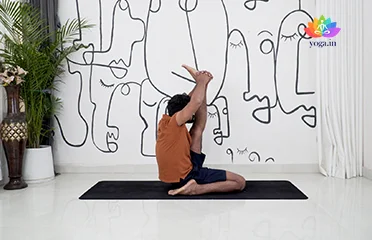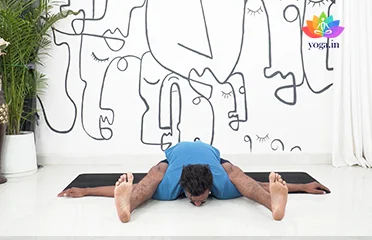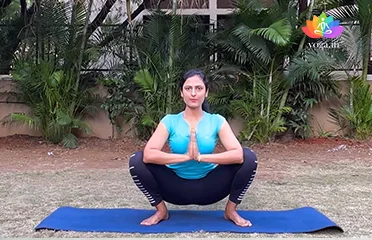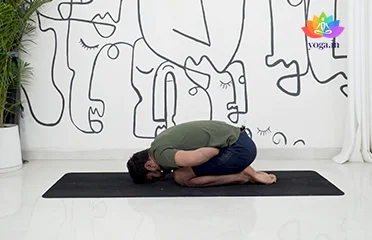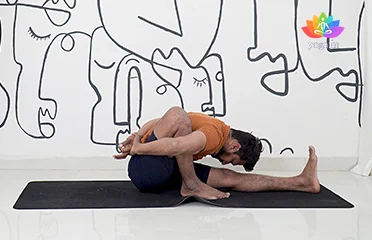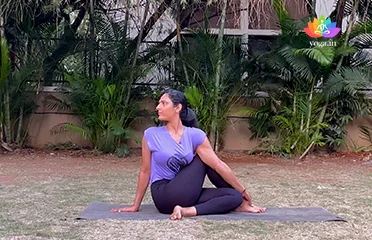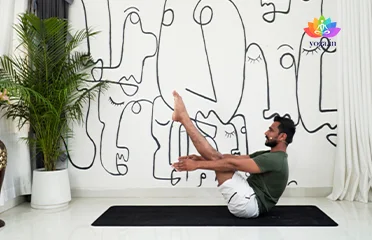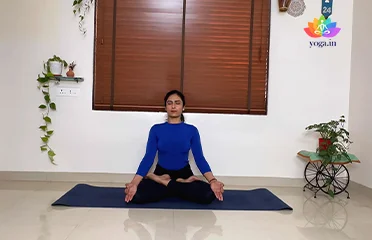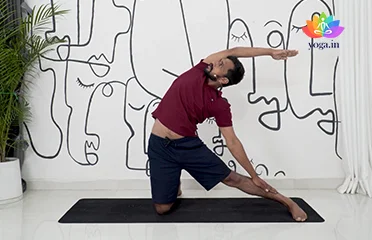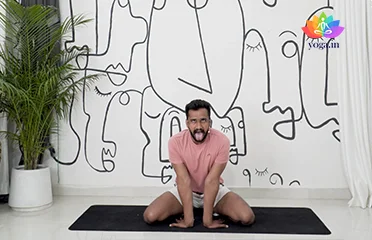Kraunchasana (Heron Pose)
क्रौञ्चासन / Heron Pose
The Sanskrit name is derived from Kraunch (क्रौञ्च) meaning heron [�K]
Kurmasana (Tortoise Pose)
कूर्मासन / Tortoise Pose
The Sanskrit name is derived from Kurma (कूर्मा) meaning tortoise [�K]
Malasana (Garland Pose)
मालासना / Garland Pose
The Sanskrit name is derived from Mala (माला) means garland or rosary [�K]
Mandukasana (Frog Pose)
मण्डुकासन / Frog Pose
The Sanskrit name is derived from Manduka (मण्डुका) meaning frog [�K]
Marichyasana (Sage Twist Pose)
मरीच्यासन / Sage Twist Pose
The Sanskrit name is derived from Marichya (मरीच्) meaning ray of [�K]
Matsyendrasana (Lord of the Fishes Pose)
मत्स्येन्द्रासन / Lord of the Fishes Pose
The name Matsyendrasana is derived from the Sanskrit words Matsya (मत्स्य) [�K]
Naukasana (Boat Pose)
नौकासन / Boat Pose
The Sanskrit name is derived from Nava ( नाव) meaning boat and asana (आसन) [�K]
Padmasana (Lotus Pose)
पद्मासन / Lotus Pose
The Sanskrit name is derived from Padma (पद्मा) meaning lotus and [�K]
Parighasana (Gate Pose)
परिघासन / Gate Pose
The Sanskrit name is derived from Parigha (परिघा) meaning gate and [�K]
Simhasana (Lion Pose)
सिंहासना / Lion Pose
The Sanskrit name is derived from Simha (सिंहा) which means lion and [�K]
- 1
- 2
- 3
Yoga for Seated Comfort: Relieving Discomfort and Enhancing Flexibility in Seated Yoga Poses
Seated yoga poses, or asanas, offer a profound way to cultivate inner peace, flexibility, and strength. These postures are accessible to individuals of all fitness levels and can be practiced anywhere, making them a convenient choice for busy lifestyles. By focusing on the breath and body alignment, seated poses can help alleviate stress, improve posture, and enhance overall well-being.
Benefits of Seated Yoga Poses
- Improved flexibility: Regular practice of seated poses can increase flexibility in the hips, spine, and lower back.
- Enhanced focus and concentration: Seated poses require mental focus, helping to improve concentration and mindfulness.
- Reduced stress and anxiety: The calming nature of seated poses promotes relaxation and stress reduction.
- Improved posture: Regular practice can help correct postural imbalances and strengthen the core.
- Digestive benefits: Certain seated poses can aid digestion and alleviate discomfort.
List of Seated Yoga Poses
- Sukhasana (Easy Pose): A foundational pose, Sukhasana involves sitting cross-legged with a comfortable spine. It’s a great starting point for beginners.
- Vajrasana (Thunderbolt Pose): Kneeling with buttocks resting on heels, this pose improves digestion and grounding.
- Dandasana (Staff Pose): Sitting upright with legs extended, Dandasana strengthens the spine and core.
- Paschimottanasana (Seated Forward Fold): This pose stretches the hamstrings, lower back, and spine, promoting flexibility and relaxation.
- Baddha Konasana (Butterfly Pose): A hip-opening pose that also stretches the inner thighs and groin.
- Ardha Matsyendrasana (Half Spinal Twist): This twisting pose helps improve spinal flexibility and digestion.
- Virasana (Hero Pose): Kneeling with knees together and hips on heels, this pose strengthens the ankles and knees.
- Padmasana (Lotus Pose): A challenging pose that requires flexibility and practice, Padmasana is considered a meditative posture.
Tips for Practicing Seated Yoga Poses
- Use props: Blankets, blocks, and chairs can be helpful for support and comfort.
- Focus on breath: Deep and steady breathing enhances the benefits of the poses.
- Start slowly: Begin with simpler poses and gradually progress as your flexibility improves.
- Find a comfortable space: Choose a quiet place where you won’t be disturbed.
- Practice regularly: Consistent practice is key to reaping the full benefits of seated yoga.
Common Challenges and How to Overcome Them
- Tight hips: Use props like blankets or blocks to support your hips and gradually increase flexibility.
- Back pain: Focus on core engagement and avoid rounding the back.
- Difficulty sitting cross-legged: Explore alternative poses like Dandasana or Virasana.
- Mind wandering: Bring your attention back to the breath and body to maintain focus.


